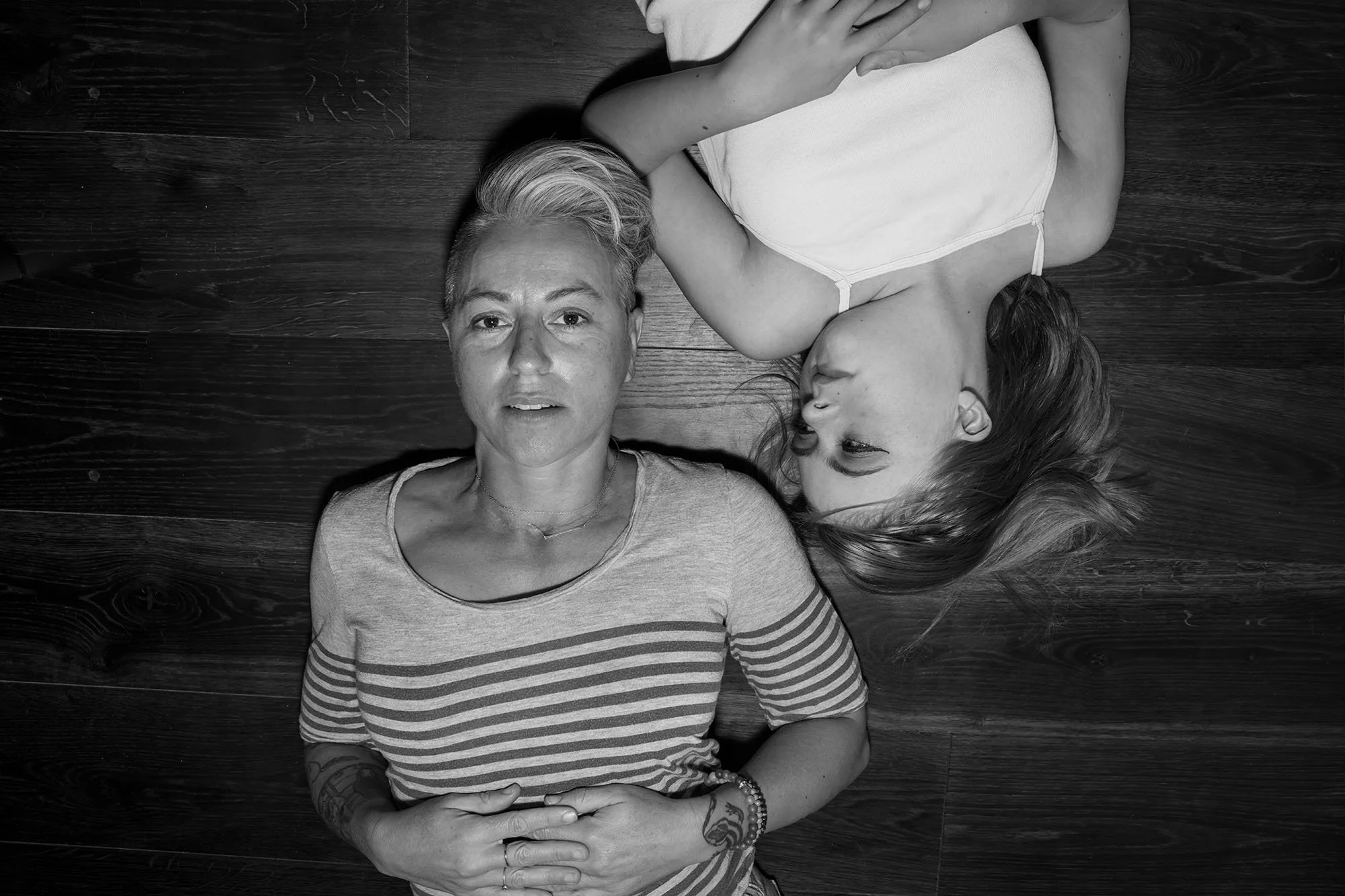
REGARD
When my daughter was born, I was told that she had the “physical markers” for Down syndrome. A few days later, the diagnosis of Trisomy 21 was confirmed with a simple blood test. Today, years later, Luigia is a lively teenager, yet these “markers” have grown with her, and her disability remains visible to the outside world. As we try to go about our ordinary lives in our community--getting ice cream after school, going grocery shopping or walking to the local library--I often catch people staring, gawking, or side-glancing at her, at us. Even though their gaze feels invasive, I perceive it as more questioning than judging, at least most of the time. With this on-going series REGARD, I am opening a window into our reality. To emphasize control over my message, these everyday scenes are meticulously set, lit up; they are staged and posed. The performers are my daughter and me. The double self-portraits are purposefully developed in black and white, for by refusing the decorative and emotionally evocative element of color, I aim to maintain a distance between us and them. The composition of the photographs expresses routine, domestic acts in which I address the viewers directly: look at us bathing; look at us grooming; here we are at bedtime; this is us on a random day at the beach. In each scene, the viewers are plunged into the outside perspective. At first glance, it may seem that I am offering us as vulnerable prey to their judgement, yet in fact I am guarding our lives, and the viewers are caught gawking--my direct gaze at the camera. My series is very basic in its concept: it shows a child, it shows a mother, it shows them living at home, performing familial acts. Because I believe in the connective power offered by the depiction of domesticity, I hope that REGARD helps the audience rethink some of their assumptions about people living with disabilities and with this, I hope my series finds a humble spot within the movement that helps people with disabilities gain visibility.
Regard © 2025 by Anna Grevenitis is licensed under CC BY-NC-ND 4.0